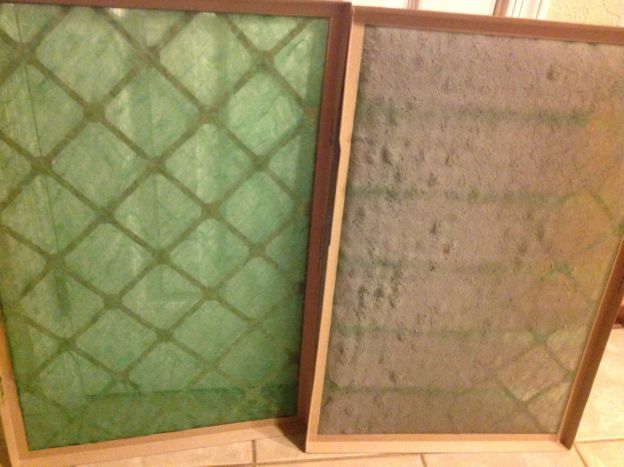If your furnace isn’t turning on, we know how frustrating that can be. It’s definitely an inconvenience to be stuck without heat on a cold day.
But don’t worry—we’ll help you quickly troubleshoot the problem.
In this blog, we’ll share some DIY repairs you can try before calling a pro. Then, we’ll share some problems a professional will need to fix.
Let’s start with the repairs you can try yourself.
Want a professional to repair your furnace ASAP? We can help right away!
DIY repairs to fix a furnace that won’t turn on
Before calling a professional, follow these steps:
Step #1: Check your furnace circuit breaker
Sometimes a power outage or a surge of power from the furnace can trip the circuit breaker, which cuts power to the furnace. This means the furnace won’t start until the breaker is reset.
Look for the circuit breaker labeled “furnace” or “HVAC.” If it has flipped, reset it and then see if your furnace starts up as normal.
Important note: If the breaker trips again, don’t reset it again. Call a professional for assistance. If the breaker keeps tripping, it means there’s a larger electrical problem or issue with your furnace that a professional will need to fix.
Step #2: Check your thermostat
If a tripped circuit breaker isn’t the problem, the next thing you’ll want to check is the thermostat.
Follow these thermostat troubleshooting steps:
- Make sure the thermostat has power. Is the display off or unresponsive? Try changing the batteries to see if that fixes the problem.
- Verify that the thermostat is set to HEAT. We know—this is obvious but it’s good to check anyways in case the control got accidentally switched to COOL or OFF.
- Turn up the temperature to a high setting and make sure it is to RUN mode instead of HOLD or STANDBY.
If the thermostat stays in HOLD or STANDBY mode, or your furnace still won’t start after you’ve followed the steps above, you’ll need to contact a professional. They’ll inspect the thermostat to see if there’s a wiring issue that’s causing the furnace not to start.
Step #3: Change your air filter (if it’s dirty)
A furnace will shut itself off if it overheats, which could explain why your furnace isn’t starting. One of the most common causes of overheating in a furnace is a clogged air filter.
Go to your air filter and inspect it. If it is dirty (like the one in the image below), it should be replaced to prevent your furnace from overheating.

Clean vs Dirty Air Filter
If replacing the dirty air filter doesn’t make your furnace start again and run smoothly, contact a professional for help.
Other problems a professional will need to fix
If you’ve tried the DIY steps above and are still stuck with a furnace that won’t turn on, you’ll need to contact a professional for further assistance.
Below are some common “no-start” furnace issues a professional will need to fix:
Problem #1: Condensate overflowing
High-efficiency furnaces produce condensate, which is normally pumped or drained outside so it doesn’t leak inside your home.
Sometimes a clog or issue with the condensate pump will cause condensate to overflow, which triggers a float switch. A float switch is a safety device that shuts off the furnace if it detects liquid overflowing into the drain pan, which could explain why your furnace isn’t starting.
A professional will need clear any clogs or inspect the condensate pump to make sure it’s working properly.
Problem #2: Lack of fuel or fuel leak issue
If your furnace isn’t receiving fuel for some reason, then it won’t start. Additionally, if your system detects a leak, it will shut itself off and not start to protect you from exposure to harmful gases.
A professional will check the gas valves and burners to make sure the furnace is receiving fuel. They’ll also check to see if the flue gas spill switch—the part that detects leaks in your furnace—has triggered. If it has, the technician can reset it and find the source of the gas leak in your system.
Problem #3: Electrical ignition issue
Newer furnaces have an electrical ignition system that kick-starts the heating process. If the ignition system is broken, then the furnace won’t be able to heat your home when it gets the call for heat.
A furnace technician can troubleshoot the ignition system to find what’s causing the issue. The most likely culprit is a dirty ignition (flame) sensor.
Need a furnace repair from a Texas pro?
We can get your furnace up-and-running again in no time. We offer same-day service and convenient scheduling for all furnace repairs.

.2303151622550.jpg)